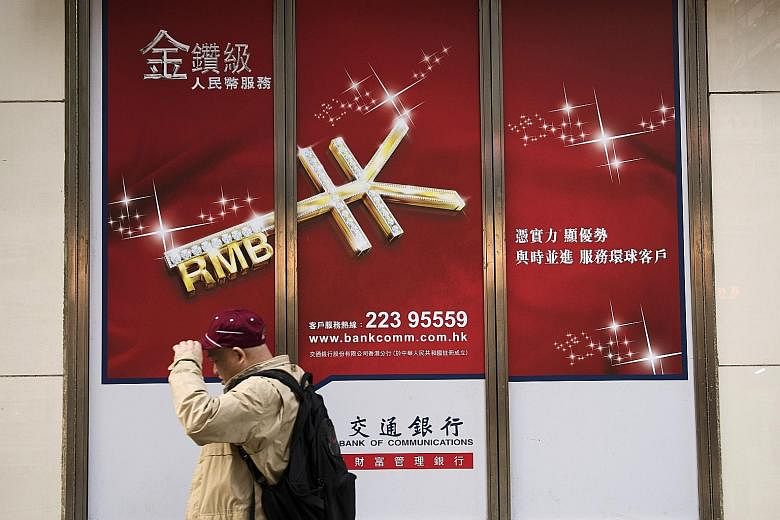BEIJING • The People's Bank of China (PBOC) scrapped its market-based mechanism for managing the yuan on Jan 4 and returned to setting the exchange rate based on what suits the authorities the best, the Wall Street Journal reported, citing unidentified people close to the central bank.
An unidentified official from the PBOC in March told economists and bankers that "the primary task is to maintain stability" when they asked the central bank to stop fighting markets and let the yuan's value fall at a closed-door meeting, citing previously undisclosed minutes of the gathering.
The Chinese currency's daily exchange rate is now back under tight government control, though the reversal has not been announced, according to the newspaper.
The PBOC guides the daily direction of the yuan by alternating between setting its value against the dollar and against a basket of currencies, WSJ said, citing people close to the central bank. The central bank's press office did not respond to requests from WSJ for comment.
The yuan will become an official reserve currency this year when it becomes part of the International Monetary Fund's Special Drawing Rights (SDR).
"Our view was already along these lines, so we're not that surprised," said Mr Ken Cheung, a foreign-exchange strategist at Mizuho Bank in Hong Kong.
"Outflows after August were quite a scary hit to financial markets. After the yuan entered SDR, opening up the capital account was no longer a key priority, while yuan stability became a key priority. But we think beginning from March, the fixing has started to follow the mechanism more."
A resurgent greenback is shaking up a strategy that the PBOC pursued over the past three months - a steady rate against the dollar, combined with depreciation against other major currencies. The yuan has now fallen to a three-month low versus the US currency while climbing to an almost four-week high versus a basket of peers.
While there are few signs of the fear that gripped global markets in January, when the yuan sank 1.5 per cent in just a week, investors are watching the currency as a barometer for the health of the world's second-largest economy, Bloomberg reported.
China devalued its currency by the most in two decades last August, ending a de facto peg to the dollar that had been in place since March last year.
At a meeting with senior officials in December, President Xi Jinping called China's regulatory system "immature" and said most officials had not done enough to guide the economy towards more sustainable growth, the WSJ said, citing people who attended the meeting.
To the central bank, there was only one possible interpretation: Step on the brakes, WSJ reported, adding that people close to the PBOC said, the bank guides the daily direction of the currency by alternating between setting the yuan's value against the dollar and a basket of currencies.
The retreat from making the yuan more market-based puts China's central bank in the difficult position of having to battle continuing downward pressure on the currency.
Keeping the currency stable comes at the expense of China's foreign-exchange reserves and restrains the PBOC's ability to protect the economy. China had US$3.22 trillion (S$4.5 trillion) in currency reserves in April, down from nearly US$4 trillion in June 2014.
The US Treasury Department estimates Beijing sold more than US$480 billion in foreign-currency assets from August through March to support the yuan.

